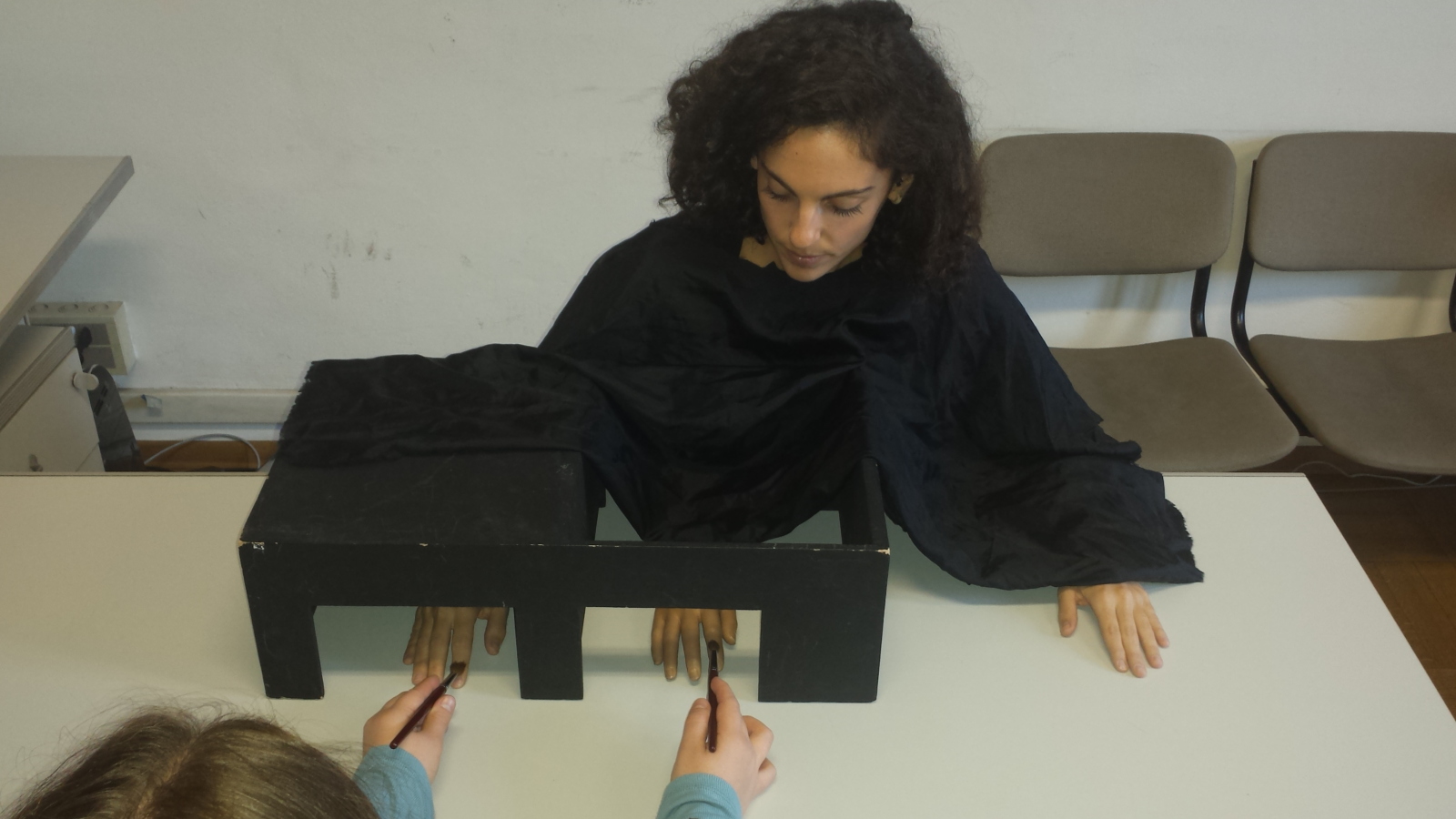Out of control: the rubber hand illusion
Interview with
If you're brave enough, you could try this: lay one hand on a tabletop and put the other out of sight below. Place a rubber hand on the table where your hidden hand would naturally rest next to its neighbour.  And have someone stroke the index finger of your real hidden hand, and the index finger of the rubber hand at the same time. It's hard to resist forming the distinct impression that the rubber hand in front of you is not your own real hand. And if someone hits it with a hammer you feel momentarily terrified that it's going to be agonisingly painful.
And have someone stroke the index finger of your real hidden hand, and the index finger of the rubber hand at the same time. It's hard to resist forming the distinct impression that the rubber hand in front of you is not your own real hand. And if someone hits it with a hammer you feel momentarily terrified that it's going to be agonisingly painful.
Why this rubber hand illusion works, we don't know; but Francesca Gabarini has found that when the illusion takes place, the motor circuits controlling movements in your real hand become powerfully depressed, as though they've been deprioritised as your attention transfers itself to the fake hand and you assimilate it into your body image...
Francesca - The sense of body ownership is the feeling that specific body parts belong to ourselves that we usually take for granted. But it can be selectively altered after brain damage when patient lose the capacity to discriminate between the own and the other body parts or there's a body ownership can be also altered during a famous experimental procedure that is the rubber hand illusion.
Chris - Okay, so tell us first of all, for those not in the know, what is the rubber hand illusion and how do you do that?
Francesca - Watching a rubber hand being touched while one's own hand hidden of the view if touched synchronously leads to a sense of body ownership over the rubber hand. And also, this leads to a shift in the perceived position of the real hand towards the rubber hand. This generates a sort of disembodiment in the real hand of the subject.
Chris - So in the mind of the person who is seeing a rubber hand on the table in front of them, their own hand might be say, hidden under the table and you stroke the rubber hand in the same place as you stroke the real hand, you end up with the person believing that the rubber hand is their own hand and one would believe that their body image, the brain accommodates their body image to include the rubber hand rather than their own real hand.
Francesca - Yes. We are able to manipulate the sense of body ownership in every participant but it's important to keep in mind that healthy subjects are always aware that it is an illusionary procedure. So they are not inducing thinking that the rubber hand is actually their own hand.
Chris - Once you've got the people experiencing the rubber hand illusion, what measurements do you make? What do you do to them next?
Francesca - We are interested in recording some motor parameters because we are interested in investigated how the human motors system reacts when a subject's sense of body ownership is altered during the rubber hand illusion. So, during the experiment, the region of the brain that controls movement and in particular hand movements was artificially stimulated by using a specific technique that is transcranial magnetic stimulation, TMS to stimulate the part of the brain involved in controlling movement that is the motor cortex. So, the magnetic stimulation generates electrical signals that travel down to the spinal cord and to the muscles, generating muscle contractions that can be measured and that we called motor evoked potential. We measured the size of these motor evoked potential and the motor evoked potential reflect the ability of the motor cortex to create, to produce the movement of the hand.
Chris - What do you find then when you compare the level of preparedness of the motor circuits when a person is or isn't experiencing the rubber hand illusion? Is there a difference?
Francesca - Yes. When subjects experienced the rubber hand illusion, we found a strong and very dramatic decrease of the amplitude of the motor evoked potential. This means that motor cortex is less able to induce the movement and the deluded hand is less ready to move. So, this means that the motor system during the illusion is down regulated.
Chris - Why would that happen because the person still believes they have a hand and they still potentially may want to move that hand, so why should believing that a rubber hand on the desk, why should that be reflected in a change in the degree of facilitation or preparedness of their motor areas?
Francesca - Because if the brain no longer considered the hand as a part of the own body, it is not able to exert a control over a body part that is no longer a part of the body. So, what we can see is that the sense of body ownership strictly depends on the possibility of movement because basically, if I believe that the hand is mine, I must be ready to use it.










Comments
Add a comment